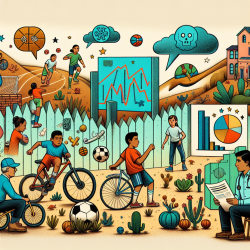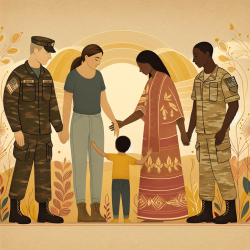Introduction
As practitioners dedicated to improving outcomes for children, understanding the diverse factors influencing their health is crucial. The research article titled "Understanding contextual barriers, supports, and opportunities for physical activity among Mexican-origin children in Texas border colonias: A descriptive study" provides valuable insights into the environmental and social barriers faced by this demographic. By examining these barriers, practitioners can enhance their strategies to promote physical activity and overall well-being among children.
Key Findings from the Study
The study conducted by Umstattd Meyer et al. (2013) explores the environmental and perceived barriers to physical activity among Mexican-origin children living in Texas border colonias. The research highlights several critical points:
- Environmental Barriers: Unleashed dogs, lack of streetlights, and traffic were identified as significant barriers to physical activity. These factors contribute to a perception of unsafe environments for outdoor activities.
- Perceived Barriers: The study found that children and their mothers reported barriers such as lack of energy and time constraints. These perceptions can significantly hinder children's engagement in physical activities.
- Opportunities and Resources: Despite barriers, the study identified resources such as exercise equipment and yard space that can be leveraged to promote physical activity.
Implications for Practitioners
Understanding these barriers and resources is vital for practitioners aiming to enhance physical activity among children. Here are some actionable insights for practitioners:
- Community Engagement: Collaborate with local communities to address environmental barriers such as unleashed dogs and traffic. Engaging community leaders and policymakers can lead to improved infrastructure and safety measures.
- Education and Awareness: Educate families about the importance of physical activity and strategies to overcome perceived barriers. Providing resources and support for time management and energy conservation can empower families to prioritize physical activity.
- Utilizing Available Resources: Encourage the use of existing resources such as yard space and exercise equipment. Developing structured programs that utilize these resources can enhance children's engagement in physical activities.
Encouraging Further Research
While this study provides valuable insights, further research is needed to explore additional factors influencing physical activity among Mexican-origin children. Practitioners are encouraged to contribute to this body of research by investigating:
- The impact of cultural factors on physical activity engagement.
- The effectiveness of community-based interventions in overcoming barriers.
- The role of schools and local organizations in promoting physical activity.
By expanding our understanding of these factors, practitioners can develop more effective strategies to promote physical activity and improve health outcomes for children in underserved communities.
To read the original research paper, please follow this link: Understanding contextual barriers, supports, and opportunities for physical activity among Mexican-origin children in Texas border colonias: A descriptive study.










